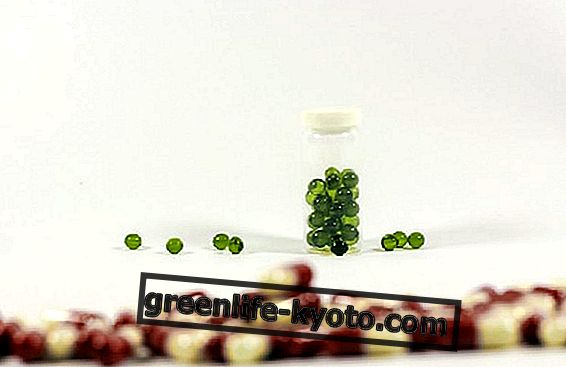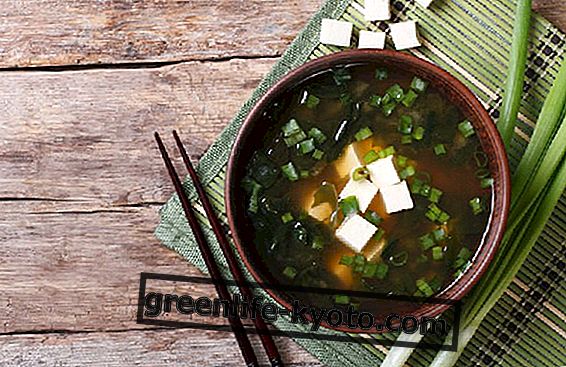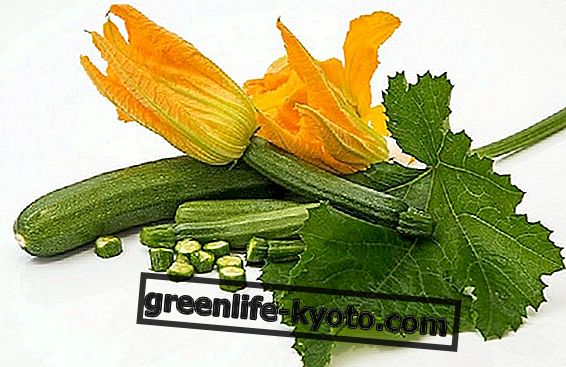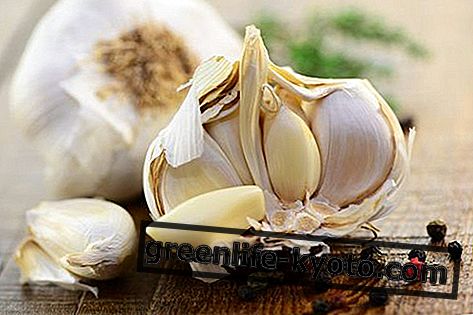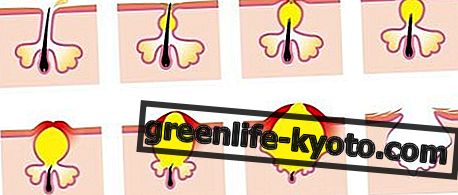Vegetables are a source of nutrients and natural fibers that are essential for a healthy diet. It is important to take it daily because it helps in the treatment and prevention of numerous diseases. Let's find out better.

Classification of vegetables and their use
We often wonder if vegetables and vegetables are synonymous. Vegetable means the vegetable product grown in the garden and subsequently harvested. The word "vegetable", on the other hand, is a gastronomic and nutritional term that indicates a "category of vegetable" based on the parts of the plant (leaves, roots, etc.) used in the diet.
In fact, vegetables are not a homogeneous group of foods because their structure depends on the different parts of the plants:
- some of the vegetables are roots (beetroot, carrot, celery, radish, horseradish, turnip) used in soups and salads. The only exception is horseradish which has a bitter taste and is more often used as a condiment, for example in horseradish sauce;
- the bulbs (yellow and red onion, leek, garlic, shallots, chives ) can be used for their taste in various dishes, usually cut, chopped or sliced. Also onions, leeks and shallots can be used raw in salads;
- leafy vegetables (lettuce, radicchio, spinach, watercress, rocket ) are often used in salads and as a garnish for dishes and in some cases, for example. in spinach, cooked;
- among the flowers or inflorescences of the vegetable (broccoli, cauliflower, Brussels sprouts, cabbage, red cabbage) cabbages are the typical vegetables, used raw, cooked, marinated or as ingredients for different dishes, often used in salads; the other varieties are boiled or steamed;
- fruit vegetables (avocados, cucumbers, peppers, tomatoes, aubergines, pumpkins and courgettes) are actually fruits in various stages of maturation containing seeds inside them. Some seeds are edible, while the seeds of others must be removed to be ready for use. They can be used raw and in salads, they are the basis of many sauces, soups and stews;
- the stems and buds (green and white asparagus, artichokes, celery, fennel, bean sprouts) have a wide range of uses. Celery and sprouts, for example, can be used raw in salads, while it is common to cook asparagus and artichokes;
- the pods and the seeds (beans, maize, peas, sweet peas / mangetout, rice) are always cooked to be consumed;
- the tubers (sweet potato, potato, jerusalem artichokes) also always cooked.
However the vegetables, although being so different, have, with the exception of seeds and tubers, common nutritional characteristics.
Properties of vegetables
The importance of a daily and constant intake of vegetables in our diet is represented by a series of nutrients that these provide us with, for example, a good source of dietary fiber. This in itself has no nutritional or energy value but is equally very important for the regulation of different physiological functions in the body.
The fiber consists, for the most part, of complex carbohydrates not directly usable by the human organism. They are divided into two large groups: some of these compounds ( cellulose, hemicellulose and lignin ) are insoluble in water and act on the functioning of the gastrointestinal tract, delaying gastric emptying, facilitating transit in the intestine of the alimentary bolus and evacuation of faeces .
Instead other compounds ( pectins, gums and mucilages ) are soluble in water - in which they form resistant gels that line the walls of the intestine - and regulate the absorption of some nutrients (for example sugars and fats) reducing and slowing them down, thus contributing to control the level of glucose and cholesterol in the blood.
Vegetables provide important vitamins and mineral salts : for example, tomatoes add vitamin C, carrot and green leafy pro-vitamin A vegetables. Folate, a vitamin rich in leafy vegetables which, together with B vitamins, can help reduce the level of homocysteine in the blood, a known risk factor for cardiovascular disease.
They are also an important source of mineral salts (green leafy vegetables are rich in calcium and iron, potassium and tomato of potassium) even if the absorption of the latter is generally lower than that of the same minerals contained in food of animal origin. The consumption of vegetables can also ensure a significant contribution of selenium and zinc which are part of the body's antioxidant defense systems.
Other important substances provided by the vegetables, although present in relatively small quantities, are components that perform a protective action mainly of antioxidant type, counteracting the action of free radicals, which are able to alter the structure of cell membranes and genetic material (DNA). Among these we find the carotenoids (the pigments with the yellow, orange and red color of which the vegetables are rich - due to the presence of ß-carotene - and those red like the tomato - due to the presence of lycopene); phenolic compounds ; tocopherols (especially in green leafy vegetables).
Discover the properties of vegetables by color

Vegetable, ally of
Dietary fiber in addition to facilitating the achievement of a sense of satiety, as it helps to increase the volume of food ingested and slow down the emptying of the stomach, seems able to reduce the risk of the onset of certain bowel diseases (such as the diverticulosis of the colon) and veins (such as varicose veins), as well as important chronic-degenerative diseases, such as in particular colorectal tumors (probably due to the dilution of any carcinogenic substances, due to the reduction of their contact time with the mucosa intestinal and other mechanisms still to be clarified), diabetes and cardiovascular diseases (probably by regulating blood glucose and cholesterol levels).
Some antioxidants contained in vegetables have been studied in relation to their potential preventive effects against cancer . For example, different classes of sulfur compounds ( isothiocyanates and dithiolites of which the vegetables of the cruciferous family such as broccoli, cauliflower, cabbage are rich; the allilsolfuri of which garlic is rich) facilitate the elimination of carcinogenic substances on a cellular level. Isoflavones and phytoestrogens seem to inhibit the growth of some cancer cells.
How to choose and consume vegetables
Being a responsible consumer means recognizing, buying, consuming and storing vegetables in the most appropriate way and respecting their precious nutritional properties.
A first aspect is to choose seasonal vegetables (rich in all the nutritional characteristics), paying attention to local products, perhaps stocking up in markets managed directly by farmers. It can be a healthy and balanced way of eating and helping to protect the environment, including limiting the pollution due to the transport of goods.
Choose vegetables with labeling and traceability of the supply chain which consists in the possibility of reconstructing the history of the product we are about to consume.
Recognize the categories that indicate the quality of vegetables (Extra category: regular shaped vegetables, well cleaned, free of defects; category I: whole vegetables of good quality, fairly regular in shape, where very slight signs of injury are allowed; category II: category II: vegetables with inferior quality characteristics where defects due to the sun are allowed, small lacerations in the leaves or slight bruises, irregular shape but never defects that jeopardize their use).
For the consumption of vegetables it would be better to eat raw vegetables but not all the varieties are palatable if not cooked and then prefer stewed and steamed cooking which is one of the best ways to cook vegetables.
Finally the preservation of the vegetables that can be stored in the refrigerator in the appropriate compartment for fruit and vegetables. The right temperature for a correct conservation is 4-5 ° C.
Did you know that
The recommended fiber intake is around 30-35 grams / day (for the child 5 grams / day plus 1 gram multiplied by age), an amount higher than that currently assumed in Italy. To reach the recommended levels it is good to consume more often fiber-rich foods instead of using "fiber-concentrated" dietary products since so far no study has shown that the administration of the single components in the form of supplements can give the same beneficial effects that are associated to the ingestion of vegetables.
It is thought, in fact, that these effects are due above all to the combined and synergistic action of multiple constituents present in the food. This action seems to cease when the beneficial compounds are ingested individually and in a relatively concentrated form in supplements and other similar substances.
